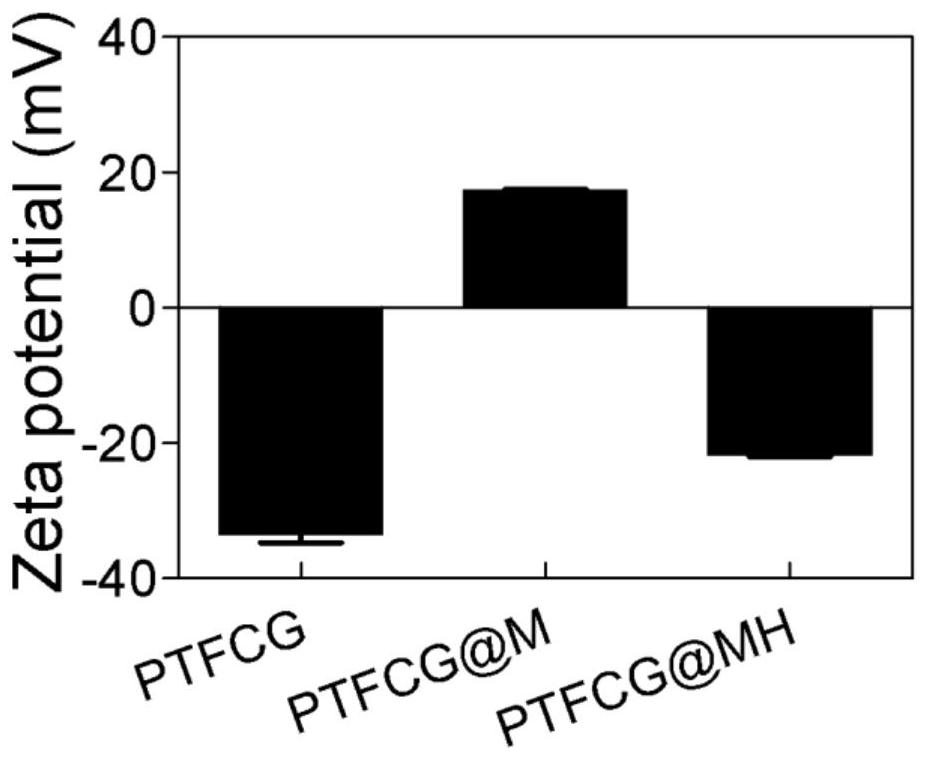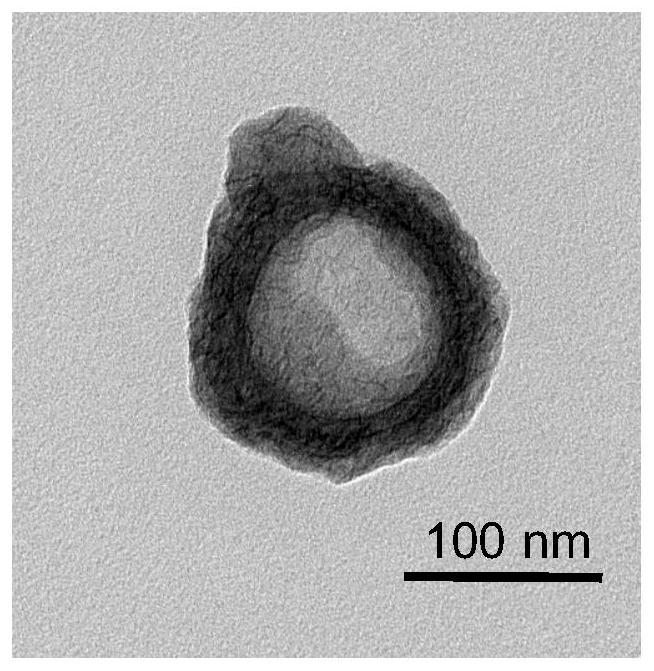Nanoreactor as well as preparation method and application thereof
A nanoreactor and nanoparticle technology, applied in biochemical equipment and methods, nanotechnology, nanomedicine, etc., can solve problems such as complex preparation process, increased design difficulty, and tediousness
- Summary
- Abstract
- Description
- Claims
- Application Information
AI Technical Summary
Problems solved by technology
Method used
Image
Examples
Embodiment 1
[0059] This embodiment provides a method for preparing core-shell nanoparticles, comprising the following steps:
[0060] (1) 40 μL of tannic acid (TA) aqueous solution with a concentration of 40 mg / mL and 10 μL of glucose oxidase (GOx) aqueous solution with a concentration of 10 mg / mL were sequentially added to 5 mL of ultrapure water as the aqueous phase. 100 μL of 20 mg / mL polylactic-co-glycolic acid (PLGA) acetone solution, 40 μL of 10 mg / mL ferric chloride (FeCl 3 ) acetone solution and 20 μL of chlorin e6 (Ce6) dimethyl sulfoxide solution with a concentration of 20 mg / mL were sequentially added to 1 mL of acetone as the organic phase.
[0061] (2) Slowly drop the organic phase into the water phase, ultrasonically stir, and centrifugally wash to obtain core-shell nanoparticles (PTFCG).
Embodiment 2
[0063] The present embodiment provides a kind of preparation method of nanoreactor, comprises the steps:
[0064] (1) 40 μL of tannic acid (TA) aqueous solution with a concentration of 40 mg / mL and 10 μL of glucose oxidase (GOx) aqueous solution with a concentration of 10 mg / mL were sequentially added to 5 mL of ultrapure water as the aqueous phase. 100 μL of 20 mg / mL polylactic-co-glycolic acid (PLGA) acetone solution, 40 μL of 10 mg / mL ferric chloride (FeCl 3 ) acetone solution and 20 μL of chlorin e6 (Ce6) dimethyl sulfoxide solution with a concentration of 20 mg / mL were sequentially added to 1 mL of acetone as the organic phase.
[0065] (2) Slowly drop the organic phase into the water phase, ultrasonically stir, and centrifugally wash to obtain core-shell nanoparticles (PTFCG).
[0066] (3) Take 1 mL of the above-mentioned core-shell nanoparticles, add 50 μL of polypropyleneimine (PAH) with a concentration of 20 mg / mL, and 25 μL of potassium permanganate (KMnO) with a co...
experiment example 1
[0070] The nanoreactor of embodiment 1 and embodiment 2 is detected as follows:
[0071] 1. Particle size and potential: respectively detect the particle size and potential of PTFCG, PTFCG@M, and PTFCG@MH. The measurement method is: take the sample solution and place it in a Marlven Nano ZS instrument, use the dynamic light laser scattering method to detect the particle size, and measure the cell The temperature was set at 25°C, and each sample was operated in triplicate. figure 1 with figure 2 It is the particle size and potential change diagram of PTFCG, PTFCG@M, PTFCG@MH. From the results of the figure, it can be seen that the particle size of PTFCG is 170nm, and the potential is -34mV, and the particle size of PTFCG@M increases to 200nm, the potential rises to +18mV, and continues to wrap HA to form a nanoreactor PTFCG@MH. The particle size increases to 210nm, and the potential drops to -21mV.
[0072] 2. Morphology: observe the shape of PTFCG@MH, the detection method o...
PUM
| Property | Measurement | Unit |
|---|---|---|
| Particle size | aaaaa | aaaaa |
| Particle size | aaaaa | aaaaa |
Abstract
Description
Claims
Application Information
 Login to View More
Login to View More - R&D
- Intellectual Property
- Life Sciences
- Materials
- Tech Scout
- Unparalleled Data Quality
- Higher Quality Content
- 60% Fewer Hallucinations
Browse by: Latest US Patents, China's latest patents, Technical Efficacy Thesaurus, Application Domain, Technology Topic, Popular Technical Reports.
© 2025 PatSnap. All rights reserved.Legal|Privacy policy|Modern Slavery Act Transparency Statement|Sitemap|About US| Contact US: help@patsnap.com



